RZB Test device for emergency power luminaires


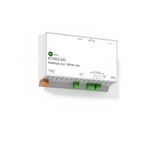

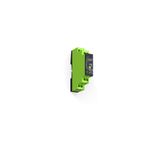
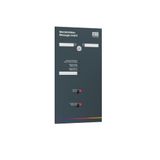

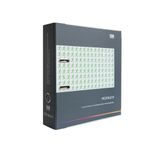

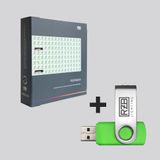
RZB test hardware lets project teams initiate functional and duration checks without opening fittings or interrupting operations. Units simulate mains failure, log outcomes, and expose clear status for commissioning and maintenance. For distributors, one footprint covers manual keyswitch lines, DALI-2 networks, and central battery concepts.
rzb emergency light tester functions and test cycles
These units trigger functional tests (typically 30–60 s to verify changeover and LED load) and duration tests equal to the rated emergency time (common site values 1 h or 3 h). Start can be local button, keyswitch input, scheduled via controller, or DALI-2 command. Status returns through bi-color indicators, dry-contact outputs to BMS, or DALI-2 feedback, so facility teams get pass/fail plus battery charge state without ladder access.
rzb compliance test units interfaces and protocols
Supply is 220–240 V AC, 50/60 Hz with SELV control terminals where provided. Interfaces include keyswitch lines for legacy self-contained fittings, DALI-2 IEC 62386-202/251/252/253 for addressable luminaires, and relay I/O for central battery racks. Clock accuracy keeps scheduled runs aligned; typical contact ratings cover 24 V DC logic and 230 V AC signal loads. Faceplates are IP20, with indoor ambient −10…+40 °C. Front plates use solvent-resistant legends to withstand cleaning cycles.
rzb test modules range and mounting options
Form factors span inline cassettes behind the luminaire bezel, remote puck modules in ceiling voids, and DIN-rail cards for riser panels. Typical plate depth 20–28 mm; cassette thickness 1.5–3.0 mm to suit common host slots. Versions with integral timer support standalone testing; addressable variants report per-fixture results to the headend. For retrofit, a compact unit injects a simulated mains-fail on the switched line while preserving local isolator function.
RZB product range and series overview
Families include manual trigger plates with locator LED, auto-test controllers that cycle luminaires on a calendar, and gateway interfaces for BMS notification via dry contact or bus. Battery chemistries supported follow the host gear (NiMH, NiCd, Li-ion with protected packs); the tester reads driver feedback rather than managing cells directly. Where luminaires combine maintained and non-maintained modes, the controller respects the host wiring so escape routes remain lit as specified.
RZB technical specifications and standards
Operation aligns with EN 1838 visibility outcomes and luminaire construction to EN/IEC 60598-2-22; automated sequences follow EN 62034 concepts for self-testing systems. Typical indicators: green steady for charge, amber for test active, red for fault. Minimum wiring: L/N plus control pair (keyswitch or bus). Cable segregation keeps SELV away from mains inside shared conduits. Surge protection to 1–2 kV line-to-line is common for stable behavior on noisy mains.
Applications and compatibility with RZB systems
Use inline plates in corridors and over-door positions where fast access matters; place DIN-rail cards in electrical rooms to orchestrate group tests per floor. In mixed estates, a single controller can schedule weekly functional and quarterly duration tests while logging timestamps per luminaire. Where a central battery feeds escape circuits, the controller supervises feeder health and commands group simulations. The phrase rzb maintenance testers suits bundles ordered for FM teams that need portable triggers for night checks. For projects standardizing on blades and bulkheads, a rzb test device for emergency power luminaires simplifies acceptance because the same command set works across housings.
RZB integration with other brand products
These testers pair with RZB emergency downlights, bulkheads, and exit signs without adapter looms. DALI-2 variants publish results to the site’s lighting control; dry-contact outputs land on BMS points for alarms and reports. Keep data trunking clear of sign faces and reserve 50–80 mm behind plates for bend radius and connectors in shallow boxes.
RZB selection criteria for B2B clients
- Topology — self-contained with keyswitch line, DALI-2 addressable, or central battery; match the estate standard.
- Reporting depth — local LEDs only, relay to BMS, or full DALI-2 diagnostics with per-fixture history.
- Test scheduling — onboard clock with calendar, headend-driven, or manual only for small sites.
- Electrical fit — 220–240 V AC supply, SELV I/O where needed, contact rating compatible with site BMS inputs.
- Physical form — plate, puck, or DIN-rail; confirm cavity depth and bezel cutout to avoid shadowing.
- Environment — indoor IP20 standard; select vandal-resistant face where public access or carts are common.
Advantages of working with Bankoflamps
We align quotations to your BOM with individual B2B pricing, assign a personal account manager, and show live EU stock before you commit. Most quotes return in about one hour. Ordering by EAN/MPN keeps records clean; downloadable price lists stay current for your ERP. You can track lead times and order status, review purchase history to consolidate SKUs, and for trusted partners we offer post-payment up to 30 days. Our team plans consolidated shipments to lower freight, holds price validity windows for stable forecasting, and supports operations in France, the Baltics, Germany, Spain, Italy, Belgium, and the Netherlands.